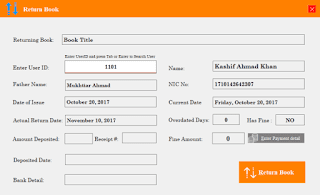Introduction to Library Management System (LMS)
- Library Management System is a system
software that
makes use of information technology (IT) to carry out managerial objectives
and used to manage
the catalog of a library.
- This helps to keep the records of whole
transactions of the books available in the library (store,
organize, share and retrieve vital information needed to carry out daily
operational functions of the library.)
- An Integrated Library Management System
(ILMS) is an automated package of library services that contains several
functions.
- A library management system (LMS)
involves three basic elements: hardware, software and the users.
- LMS is a
network of computers that uses a certain program to facilitate technical
functions of the library. One such function is electronic cataloging.
- With LMS, library users can trace
desired books electronically without going through shelves. LMS also
facilitates the lending process by keeping records of items lent and borrowers'
information. LMS supports other administrative tasks such as inventory and data
processing.
- SURPASS, L4U, Readerware, Koha are
some of the best types of LMS.



